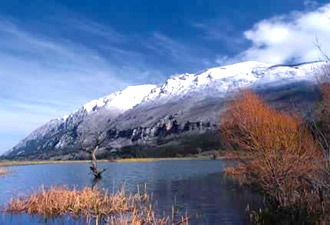|
Villa Sant’Andrea is surrounded by many beautiful resorts, ideal destination for those who want to discover the most genuine part of Sicily. Landscape changes continuously, going from Cefalů sea to Madonie mountains, crossing a still, untouched nature and a genuine rural environment, where Roman and Greek cultures merged with traditions and offer today an integrated system of cultural tourism. Hereafter some resorts reachable within few kilometres from the farmhouse.
 Piano Battaglia
Piano Battaglia
The only skiing resort of Western Sicily, it is in the heart of the Parco delle Madonie (1572 mt a.s.l.).
It’s an excellent starting point for hiking on the highest peaks of the Park, and has three ski tracks:Giovanni Falcone track (ex scoiattolo) - blue – 500 Mt.Paolo Borsellino track (ex Sparviero) - red – 2 kmVincenzo Mollica track - black – 500 Mt.
Petralia Sottana
Small village, founded in XIV century at 1.000 mt. a.s.l., from the XV century was dominated by the Ventimiglia, the Moncada and the Cardona families and at last by the Alvarez de Toledo family. To visit: the XVII century Chiesa Madre, St Mary of the Fountain’s Church, with marmoreal sculptures of Gagini’s school, The “Madonna dell’Alto” Sanctuary.
Very interesting the “Cordella Dance”, on the second Sunday of August.
Petralia Soprana
Of Greek or Sican origin, it rises at 1147 mt a.s.l.. The first built-up area dates back to the II century b.C. In 1300 it was called “petraia” (stony) and in the feudal period the “soprana” adjective was added, to differentiate it from the zone below. To visit: St Peter and Paul’s Church (dating back to 1497), the Town Hall, formerly Discalced Carmelites Monastery, the ruins of the Norman Castle and the kneeling crying Crucifixes. Not to be missed St Joseph’s Day and the encounter between Mary and resurrected Christ on Easter.
Polizzi Generosa
The name has Greek origins and stems from “Polis” (town), Politium in Latin. It probably existed already in XI century, when Count Roger of Altavilla built a fortified Castle. The small borough obtained the name “generosa” only in XIII century, from Frederic II of Sveve. During the feudal period it had a lasting economic and cultural development. To visit: St Girolamo and St Francis, dating back to XIV century, with two chapels by Gagini, the conservational Madonie Museum, in the ancient Notarbartolo Palace. Not to be missed St Gandolfo Day, on the third week-end of September, and the “Sfoglio” day the first Sunday of September.
Gangi
Although its origins are to be sought in to the most ancient history of Sicily, the first historic documents date back to twelfth century. It has been razed in 1299 because of the conflict between Frederic the III of Sveve and the Anjous, and shortly afterwards it was rebuilt upon Marone mountain: From ‘400 to ‘600 Gangi belonged to the Counts of Geraci, the Ventimiglia, to whom the square tower of the Castle is attributed. In 1625 Graffeo Family, appointed by Philip III of Spain Princes of Gangi and Marquises of Regiovanni, succeeded Ventimiglia. The title goes in 1677 to the Valguarnera Family.To visit the Castle, and the Palaces Buongiorno, Sgadari and Mocciaro.A typical tradition is the “Fari a San Giuseppe”, characteristic lunches in farmhouses in honour to St Joseph.
|









 Piano Battaglia
Piano Battaglia